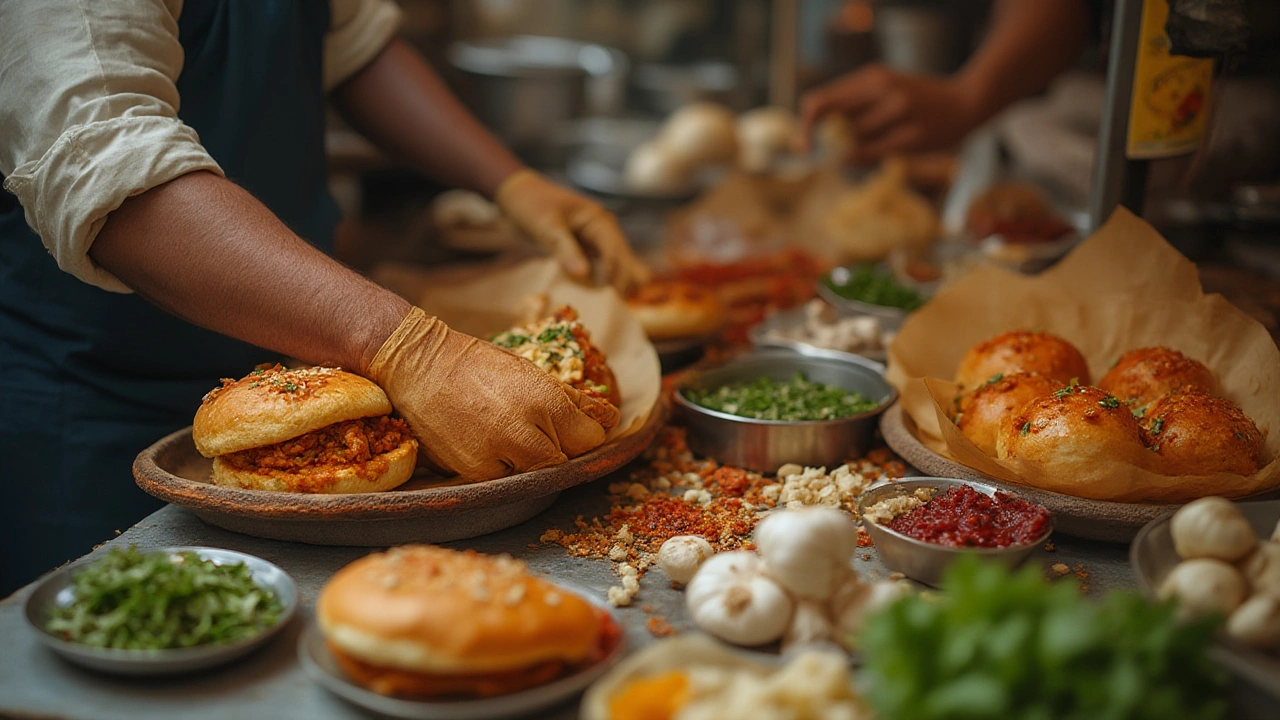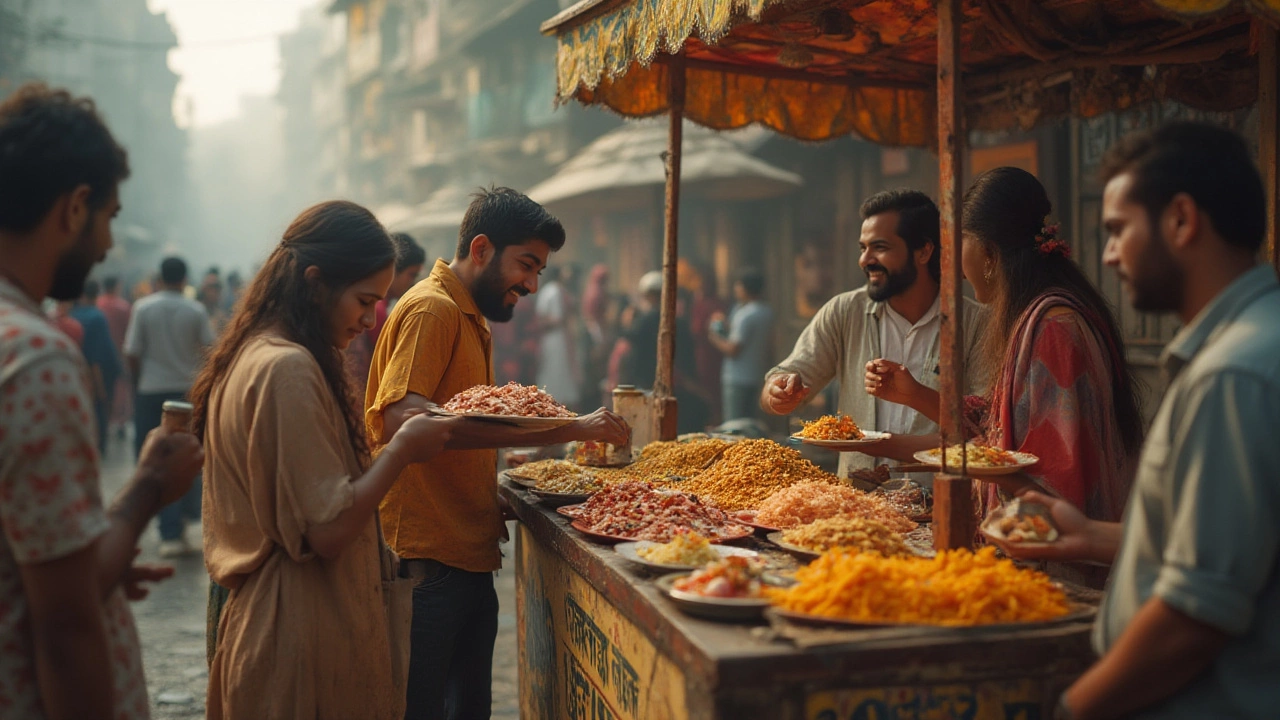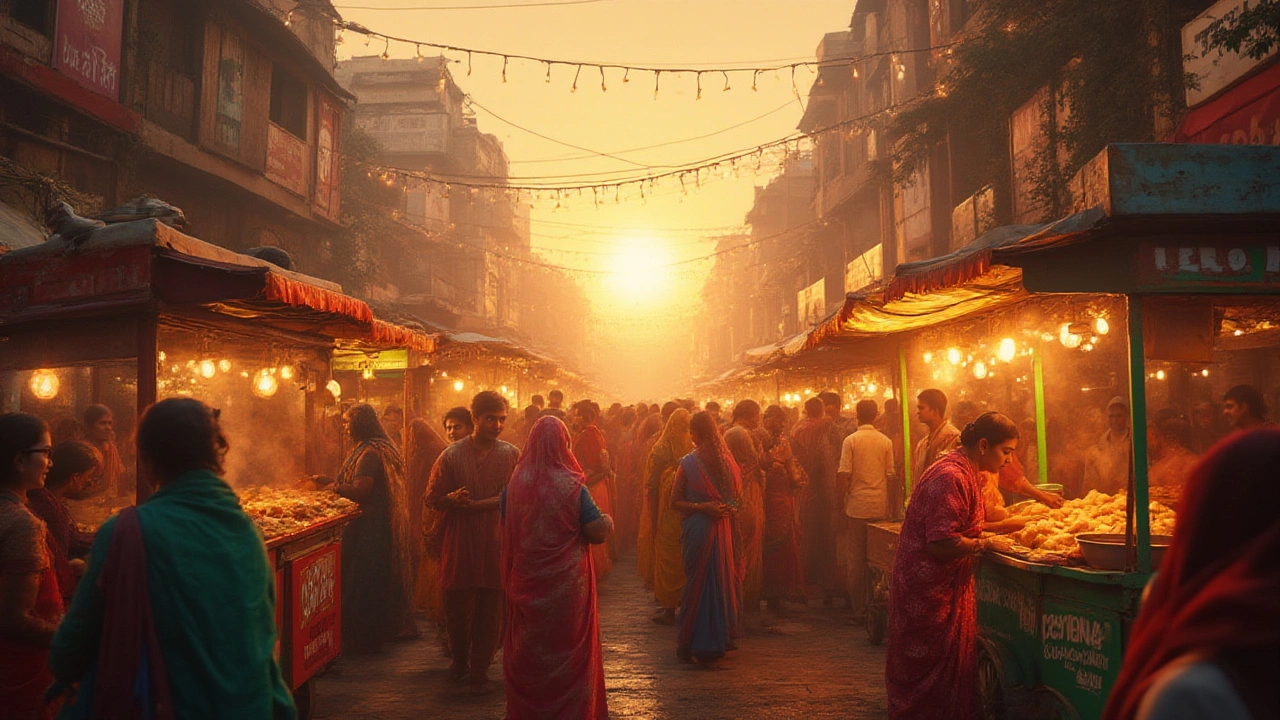15 Jul 2025
- 0 Comments
Indian street food isn’t just something to eat; it’s a pulse that runs through every city, small town, and even the tiniest highway stop. Step on any busy street in Mumbai, Delhi, Kolkata, or Chennai, and your senses get flooded—spices in the air, sizzles from hot tavas, people gathered around the carts, plates balanced in hands, laughter and haggling in between bites. But among all those choices, which dish actually claims the title of the most selling street fast food in India?
The Reigning King: India’s Most Sold Street Snack
You can argue endlessly about regional favorites—Delhi’s parathas, Chennai’s dosas, Kolkata’s kathi rolls, Mumbai’s sandwiches. But none of them match the sheer ubiquity or the sales numbers of one dish. Drumroll: it’s pani puri (known as golgappa in North India and puchka in the East). Ask a vendor in Mumbai’s Chowpatty, or a street cart owner in Lucknow’s Hazratganj, and they’ll tell you: this stuffed, crunchy orb is what disappears the fastest on any given day.
What gives pani puri its crown? For one, it’s cheap. In 2024, a plate of six pieces would cost you anywhere between ₹20-₹60, depending on your city and the vendor’s fame. It’s easy to eat while standing, it pleases all ages, and it’s totally customizable—fill it with spicy, tangy, sweet, or even yogurt if you prefer. Some vendors now even offer up to twelve flavors of water in a single serving. The popularity isn’t just talk; consumer goods research firm IMAGES Group did a survey in 2023 and found that pani puri stalls outnumbered all other snack stalls combined in eight of India’s ten biggest cities. That’s wild reach.
Check out this snapshot of a typical daily sale from a Delhi street vendor in 2024:
| Day | Pani Puri Plates Sold |
|---|---|
| Monday | 520 |
| Tuesday | 486 |
| Wednesday | 610 |
| Thursday | 575 |
| Friday | 700 |
| Saturday | 800 |
| Sunday | 920 |
That’s almost 5,000 plates in one week from just a single cart! Multiply that by thousands of vendors across the country, and you get why this snack is in a league of its own.
Everything You Never Knew About Pani Puri
What’s inside each orb? The base is a hollow, crispy puri, made from atta or semolina, fried until puffy. The stuffing is bitingly simple—spicy mashed potato or white peas, sometimes with sprouted moong, topped with a tongue-tingling tamarind water—pani—that makes it an explosion of flavors. Some parts of India toss in chopped onions or even sweet chutney for an extra kick.
The rules for devouring a plate? Eat one in a single bite. If you bite halfway and it bursts, you risk wearing the snack. In some cities, vendors challenge customers: ‘Paani kam ya zyada?’ It means you can control if your puri is drenched or only moistened, sweet or volcanic, all up to your mood.
Skeptical about hygiene? A lot of folks were too. Especially after COVID-19 hit, things slowly shifted. Across metropolitan cities, many street carts started using gloves, filtered water, and even introduced “touchless” pani puri vending machines in malls from 2022 onwards. The thrill of street food stayed alive, just got a bit more modern (and cleaner!).
Wondering how far this classic goes? In places like Bengaluru and Pune, fusion varieties have popped up—Mexican pani puri with salsa, cheese burst pani puri, and even chocolate-filled bites for the daring. NRI pockets in London, New Jersey, and Dubai now offer their expat versions, proving that spice and crunch travel well.

Beyond the Puri: Top Contenders in India’s Street Food Race
Of course, pani puri doesn’t hold every heart. Second place is hotly contested. Samosa remains an all-time favorite: that golden, triangular pocket stuffed with spicy potato and peas, deep-fried till crisp. At last count, a single busy lane in Lucknow sold over 2,000 samosas every day, each with its own blend of chutney, sometimes even chickpeas or chole on the side.
Enter chaat—the catch-all for snacks like aloo tikki, papri chaat, dahi puri, and more. Chaat shops pop up outside schools, colleges, and markets almost everywhere. Why? Because the possibility of textures and flavors is endless. In some towns, ragda patties reign supreme; elsewhere, pav bhaji—a mix of mashed vegetables in butter—steals the show, especially late at night on Mumbai’s Marine Drive or Pune’s JM Road.
South India has its own warriors. Nothing keeps Chennai’s teens fueled after hours like piping hot idli dipped in chutney and little vadas with sambar, sold from mobile “thattu kadais” (makeshift carts). Dosas, rolled and crisp, also get an honorable mention—it’s estimated that just in Bengaluru, street dosa carts collectively sell nearly 1.5 million dosas a month. Now that’s steady demand!
Let’s not forget the flavorful kathi roll and egg roll—crisp flatbread spiraled with spicy chicken or paneer, onions, and sauces, all rolled up for easy grabs. Originating in Kolkata, these rolls now have a cult following in posh Delhi markets and even five-star food trucks in Mumbai.
Pro Tips: Enjoying Street Fast Food Like a Local
Want to eat street food like you grew up with it? First tip, never rush. The fun is in the banter—ask about the day, try to get the vendor’s story. Trust your senses: does it smell fresh? Are the puris puffed up hot, is the chutney lively with color? Choose stalls with more ‘regular customers’—if the same aunties keep coming back, there’s a reason.
Check the line: a longer line often means faster turnover, which equals fresher ingredients. Don’t shy away from customizing—love it extra spicy, request it; prefer sweet imli chutney, just ask. If you’re with locals, let them order recommendations for you. There’s always a secret topping or house-special spice mix hiding behind the counter.
Pro hack: If you’re a first-timer, start with the classic flavors—spicy water and potato stuffing. Then move on to the ‘special’ versions: mint, garlic, even pink guava flavor pani. Pair your order with a local drink—shikanji in North India, chaas (spiced buttermilk) in the West—or grab a matka kulfi chaser if you’re daring enough for sweet after that spicy onslaught.
And yes, don’t try to eat street food in the middle of a crowded road. That’s rookie territory. Find a slightly quieter corner or, if you can, make friends with the vendor and snag elusive plastic stools for a true “insider” meal.

Why Street Food Will Always Win in India
India’s most selling street food isn’t just about numbers. It’s about the culture wrapped up in every crunchy bite—the stories, the generations, the pushcarts, and the innovation. When people visit India, their first Instagram selfie is more likely beside a pani puri cart than inside a fancy restaurant. And why not? Some vendors have become celebrities in their own right, with fan groups and YouTube channels dedicated to their multitasking, their special masala, or their record-breaking speed. One record-holder in Indore reportedly served 120 pani puri pieces in under 10 minutes to a single customer in 2023—sounds exhausting, but crowds cheered!
The music of the streets, the crackle of hot oil, the quick hands of vendors tossing puris and plates—these are tiny, everyday miracles. Next time you walk by a busy cart, pause to watch the dance, listen to stories, and then, go ahead—ask for a plate. Just be warned: you’ll probably end up wanting seconds.
